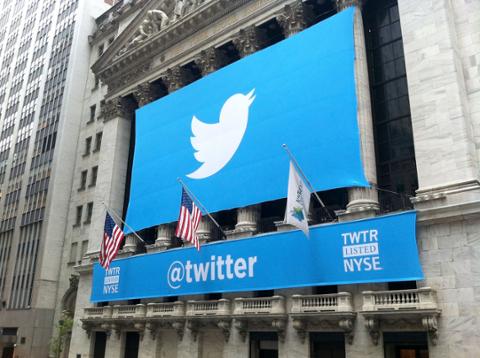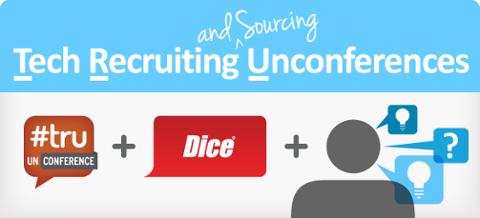
“Time to hire” is one of the gold-standard recruiting KPIs, but in the past few years, there’s been some pushback in the industry around its viability as a metric, especially in tech recruiting.
The Main Argument
The supporting argument is a logical one: If you value “time to hire” above all else, does that mean you’re potentially rushing hires? And if you’re rushing hires, are you getting the talent you need for the specific tech projects on your road map? Wouldn’t a 12-day fill who’s going to knock it out of the park be better than a six-day fill who will mostly putter around and not excel? In short: if the focus is insanely on “time to hire,” are we in turn sacrificing the potential to hire “A” stars. There’s a complex picture around “time to hire.” If we really want to focus on crushing this goal in recruiting, then the overall metric should be decreasing. In reality, it’s increasing. For example, while data on “time to hire” in Q2 2018 varies, the average vacancy duration for jobs across all U.S. industries continues to climb. It currently stands at 27.9 working days, up from 15 in 2009, according to DHI-DFH Measure of National Mean Vacancy Duration. If the metric has declined that much, is it really the right one for us to even be tracking?
Let’s Start with Why It Still Matters
Tech road maps are complex. They’re a series of moving parts, and oftentimes, “B” (a project) can’t happen until “A” (another project) is completed. But “A” requires a specific coding or database skill, such as one of the fastest-growing tech skills, for example. If that skill isn’t on board in time to get “A” rolling, then “B” is pushed back, which means cost overruns. Cost overruns are tied to delays, and delays mean the end customer/client of the company isn’t getting access to some feature or resolving some bug. That decreases customer experience, which is going to be a revenue hit. When you fail to focus on “time to hire,” you can create a whole host of additional problems. It is important to fill tech roles quickly; your budgets often directly depend on it.
No One Metric Should be Elevated Above All Others
“Time to hire” is very important in tech recruiting, but it’s not the only metric that should be considered. Ideally, what you’re looking for are the best possible candidates (not rocket science, right?). So “the best possible candidate” (i.e., quality of hire) is a mix of:
- Skill set.
- Background and past projects.
- Fit with the team.
- Fit with the manager.
- Ability to work independently.
- Adherence to deadlines.
The list goes on. “Best possible candidate” is a complex intersection. It does not always mean “fastest candidate acquired”: if the vetting process weakens at all, that can result in someone who won’t contribute in a meaningful way.
Weird Science
With data on your most successful current employees, you can define more easily what a quality hire might look like. Take gender and other diversity factors into account, as well; you don’t want to be a tech company where everyone looks and thinks the same. But once you’ve decided on an ideal mix of work style, experience, and “soft skills” such as self-awareness and ability to be managed, you know who to target. Metrics still matter, of course, but proper targeting is going to yield the talent you need to go above and beyond anyone you’re competing with. Now you can marry the two ideas together:
- Speed
- Getting the best talent
What are You Going to Do About It?
This is the general approach to follow: Consider a headcount committee: This would be a committee comprised of mid-levels and executives from different departments. They meet every other week to review headcount requests. Why is this important? Because in many organizations, headcount can be granted via a political process, with hiring managers closest to the decision-makers. Headcount needs to be tied 100 percent to business need, and a multi-department committee should be evaluating that. Bolster hiring manager/recruiter relationships: Hiring managers should be required to create a one-page document about what they need from the role, daily responsibilities, importance to the team, etc. This can be corollary to the job description, but isn’t the job description; it’s a way for the hiring manager to flesh out what they need and go over what’s truly important with the recruiter. This will give the recruiter more context, and a higher-context search leads to more qualified top-of-funnel sourcing, which will reduce “time to hire.” Increase proactive recruiting: This is more about building a pipeline as opposed to simply filling open reqs; some of the most successful corporate tech recruiters in the world use this approach as their “go-to.” Shopify actually shifted to a more proactive recruiting model and went from 550 employees to 2,000 in less than three years. Chuck FOMO out the window and do more internal recruitment/advancement: An internal advancement or department switch almost always takes less time if the compensation bands can be figured out. It’s much more likely an existing employee can “hit the ground running” in a new role, as opposed to someone who needs to learn the culture and players as he/she learns the role. Develop an employee referral program: You want your A- and B-tier employees recommending those they trust from previous jobs, networking groups, etc. Give them a financial incentive to do so. “Time to hire” will shorten because a candidate is more likely to want to jump if someone they trust (i.e., your current employee) is telling them it’s a good place to work. Redo job descriptions to focus on “where the role might evolve to”: Too often, job descriptions are all about bullet points/boxes to check in terms of previous experience. Obviously you want to make sure the skill sets are there, yes. We are not arguing against that. But you also need to tell the candidate where the role might evolve to: How can they grow? How can they gain new skills? How can they earn more? The top talent wants to know this, and they’re going to ask it in the interview anyway; get in front of those discussions. Implement group or flexible interviewing: This can get more people in front of you faster. Oftentimes what jams things up is simply the scheduling side of getting people in for a specific type of interview. Use technology more. That means not only video interviews (Hangouts, Skype, Zoom, etc.) but also automation suites for scheduling interviews; this will free up recruiter time for activities such as the proactive recruiting mentioned above.
How Dice Helps You with Time to Hire
You can find the top tech talent faster and easier with Dice. It requires you to understand what you need—and make sure the hiring manager and the recruiter are on the same page, as always. Ryan Leary helps create the processes, ideas and innovation that drives RecruitingDaily. He’s RecruitingDaily’s in-house expert for anything related to sourcing, tools or technology. A lead generation and brand buzz building machine, he has built superior funnel systems for some of the industry’s top HR Tech and Recruitment brands. He is a veteran of the online community and a partner at RecruitingDaily.


